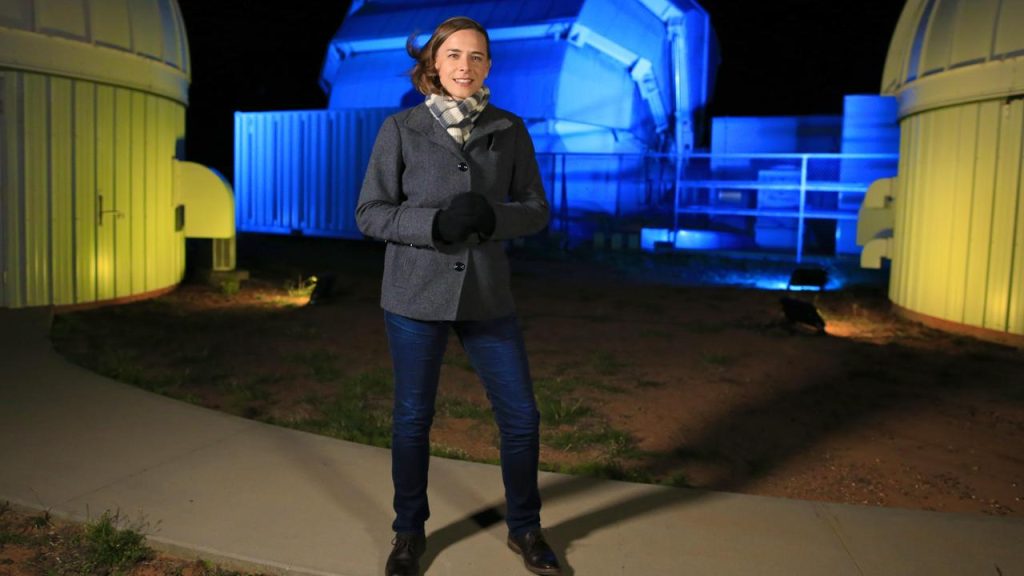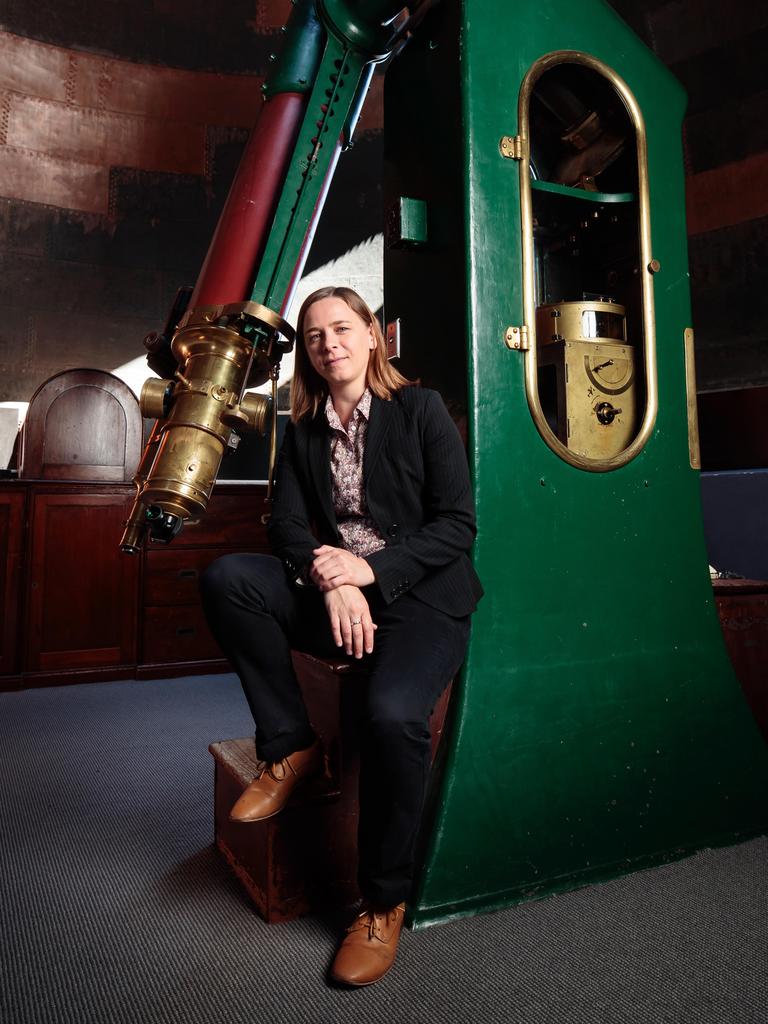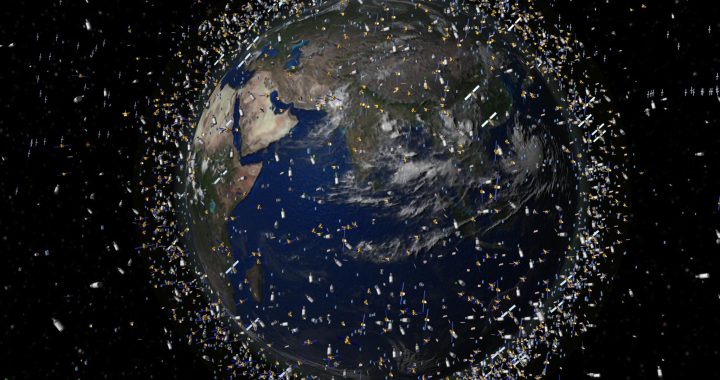Australia is playing a crucial role monitoring the increasing danger presented by space junk.
Astrophysicist Professor Lisa Harvey-Smith said the biggest danger wasn’t ageing satellites themselves, it was more the millions of small pieces of debris caused when objects collided.
Just this week, the break-up of a Chinese military satellite was attributed to small debris from a Russian rocket launched a quarter of a century ago.
The smallest object travelling at enormous speeds in orbit around Earth can cause enormous damage when it collides with a satellite, or worse, a craft carrying humans.
Professor Harvey-Smith spoke to The Australian during National Science Week, underway in Australia.
She is the Australian Government‘s inaugural Women in STEM Ambassador and formerly the project scientist for the $188m Australian Square Kilometre Array Pathfinder telescope at CSIRO. She led a group of 30 scientists at Australia’s radio telescope national facility.
She said Australian scientists were playing an instrumental role in NASA’s Moon to Mars mission.
“What groups from universities and industry are doing is working on particular areas that would support this NASA-led but international mission to the moon and beyond.
“They’re developing things like robot technologies, air traffic control for spacecraft, which is getting more and more important, and avoidance technologies for space junk and removal technology.
“There‘s heaps of projects such as trying to look at life support systems, spacesuits for astronauts, ways of keeping astronauts safe and alive, ways of manufacturing materials and space, potentially, from mining resources in space.”

She said the Australian Department of Industry offered grants to support developing systems that will let humans live in space permanently.
She said space junk was generally “the size of a flick of paint to a small nut or screw to small pieces of debris that have broken off from various processes”.
“A tiny, tiny piece could cause huge damage to the International Space Station and to human beings flying through that low orbit area.”
Professor Harvey-Smith said some countries were “doing the right thing”, others were using lasers to shoot their own satellites from Earth, exploding them into space and creating more and more space debris.
“From memory, it was the Russians and then the Chinese launching things and not deorbiting them properly,” Professor Harvey-Smith said.
In 2007 China used a ballistic missile to destroy an inactive weather satellite, causing it to explode into 3000 pieces, an action that has those tracking satellites still concerned about today.
“In 2007, we saw the Chinese conduct a very irresponsible test,” said Lt. General Stephen Whiting, the commander of Space Operations Command at the US Space Force in testimony to US subcommittees of the House Armed Services Committee in May this year.
Russia meanwhile recently launched a series of anti-satellite missile tests.
In the past day, the US space force has confirmed that the break-up of a Chinese military satellite known as Yunhai 1-02 was the result of it being hit by debris from a Russian rocket launched in 1996. Eight pieces of debris from that rocket has been tracked for more than 20 years.
“Certainly a few countries have been guilty of that recently and testing weapons in space as well which is another issue,” Professor Harvey-Smith said.
She said some countries were launching satellites and not “deorbiting” the satellites properly at end-of-life. Deorbiting involves slowing a satellite so that it drifts downwards into the earth’s atmosphere and burns up upon re-entry. “Certainly a few countries have been guilty of that recently,” she said.
She said Australian telescope facilities such as the Murchison Widefield Array in Western Australia were working on tracking space debris.
“Knowing where it is really important and most satellites have avoidance technology, but no one has got a good solution as to how to collect it yet.”

She said some satellites had gas aboard that could be sprayed to shift a satellite and avoid large pieces of space junk.
“Obviously that‘s not going to fix the problem, long term, so it’s pretty scary.”
She said clouds of debris were being tracked using lasers, radar and the reflection of radio signals such as FM radio.
Professor Harvey-Smith said Canberra-based Electro Optic Systems Holdings Ltd had been awarded a grant to develop the world‘s first automated high precision laser base based tracking system.
“There‘s a lot of people developing in Australia this capability to track and then the next step will be well what do we do now, and certainly I know we’re starting to think about whether we can nudge bits of space jump with lasers. All those technologies have been developed in tandem.”
As the inaugural Women in STEM Ambassador, Professor Harvey-Smith advises government on breaking down barriers to women and girls participation in STEM. She is based at the University of New South Wales.
“I am particularly focusing on women and girls because they are under-represented in STEM and the best way to get more people into STEM is to break down these stereotypes and barriers.”
She was concerned at the level of science and mathematical literacy among those teaching science, technology, engineering and mathematics.
“One of the challenges that we have in Australia is that a lot of teachers who are teaching science or STEM, are not actually qualified in it,” she said. “There is a shortage of STEM teachers.
“We know that teaching it in the old fashioned way, you know, rote learning, learning equations and doing problems that don’t relate to the real world, that doesn‘t engage kids at all. It’s boring.
“In some cases STEM is still being taught in that way.
“What we really need to do is show kids the real-world applications of STEM and how it relates to their lives. That really engages girls and boys.”
She was also wanting to see women with STEM skills who had left the workforce return to it.
“We‘ve got skills that we’ve already developed in this country, and people were brilliant at their jobs but for whatever reason are not currently in the workforce.
“We are working with business and industry organisations to try and improve workplace culture as well.”
